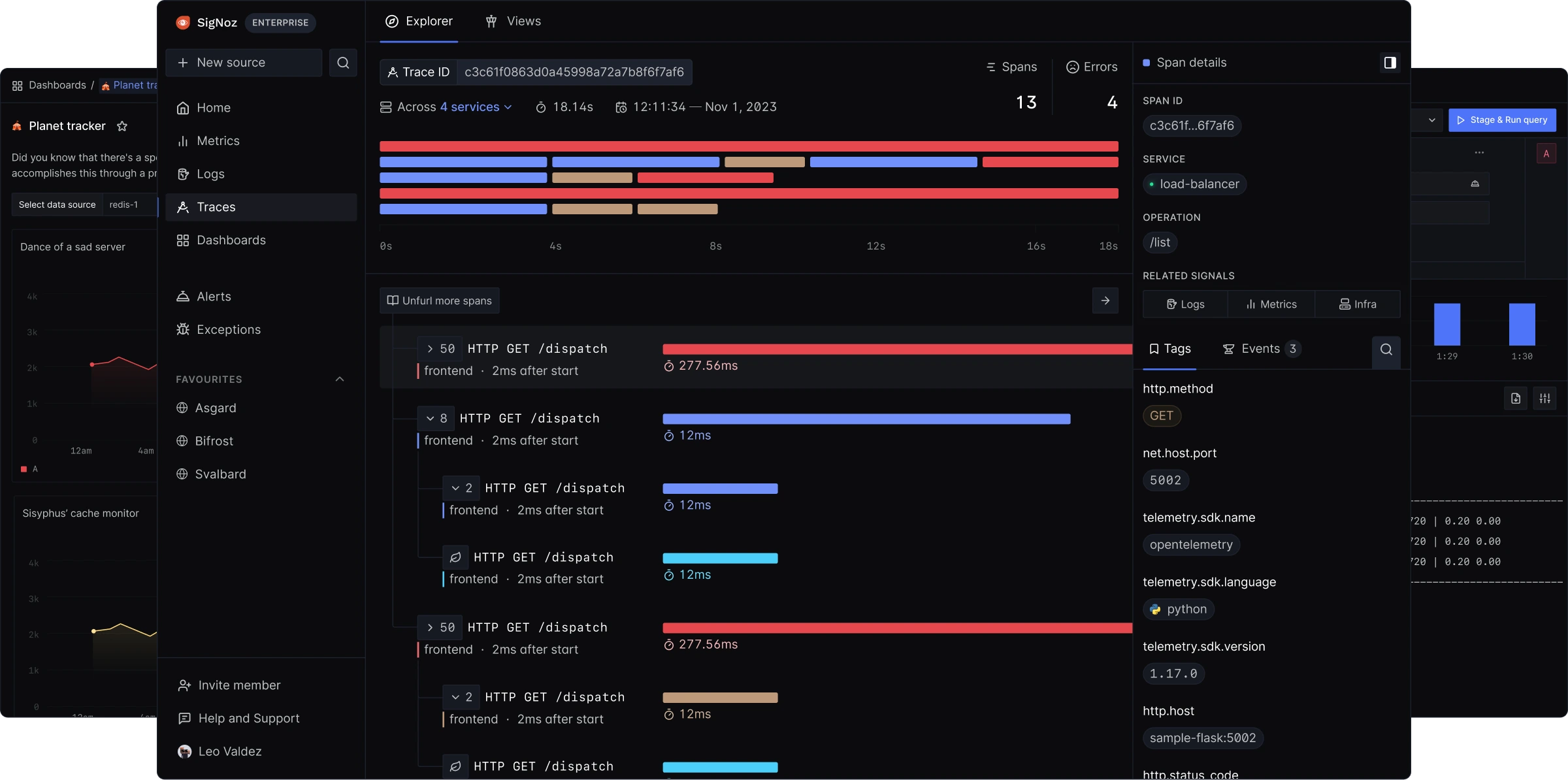SigNoz Docs
Learn how to monitor and troubleshoot your applications with SigNoz using step-by-step guides, reference docs, and video tutorials.
Start sending data to SigNoz
Connect your application to SigNoz in just a few minutes
APM / Send Traces
Automatic instrumentation for popular frameworks
Or try sending demo traces, logs, and metrics to SigNoz Cloud with the OpenTelemetry Demo App
Monitor your applications
Monitor your infrastructure, cloud services, and applications
Infrastructure
Monitor your infrastructure and resources
Integrations
Connect SigNoz with your favorite tools and services
Migrate from Datadog or Grafana
Seamlessly transition from Datadog or Grafana to SigNoz
SigNoz Features
Explore the powerful features of SigNoz
Security and Compliance
Secure your SigNoz deployment and ensure compliance
Troubleshooting and Community
Get help and connect with the SigNoz community
Additional Resources
Self-Host SigNoz
Choose the installation method that works best for your environment
SigNoz Cloud is the Fastest Way to Try Out SigNoz
1
Sign Up2
Choose Data Source3
Set Up & Visualize
